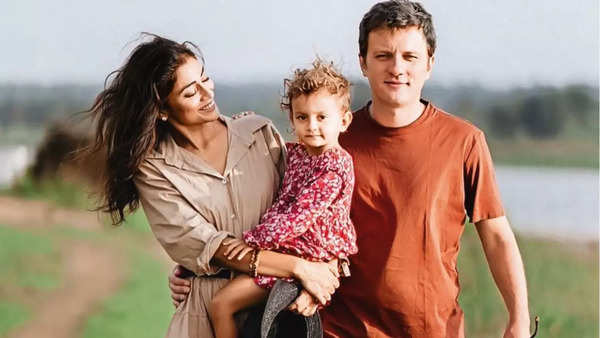‘B-Town thought I had South Indian features’
Talking about starting her career down South, Shriya, who hails from Haridwar, says, “I wanted to do South films because I felt the industry was very welcoming. They thought my features were a mix of South and North, whereas the industry folks in Mumbai thought I looked very South Indian.” Even though she has worked with top stars from the South, Shriya points out that she didn’t get the much-needed recognition as an actor in Bollywood.”
‘My work in the South industry never reached the Hindi audience’
Explaining why her work didn’t reach a wider audience, she says, “Today we are living in the times of OTT, which wasn’t the case back then. Jo main kaam South mein kar rahi thi, woh kaam Bollywood audience tak pahuchta nahi tha. Back then, we didn’t have access to movies across languages, the way we have today, thanks to OTT platforms. And South films did not release pan-India at that time. This is why people in Mumbai didn’t know much about my work. My professors from my college in Delhi refused to accept that I was an actor down South. My father had to convince them and tell them that I was working with stars like Chiranjeevi and Nagarjuna, so that they could consider my low attendance in college and allow me to sit for my exams.”
‘Earlier, there was a lot that was lost in translation’
Shriya, who was seen in SS Rajamouli’s Oscar Award-winning pan-Indian film RRR (2022), is glad that the audience is receptive towards different kinds of cinema in various languages now. “Earlier, there was a lot that was lost in translation, which doesn’t happen today. Thanks to people like Mani Ratnam sir, who I guess was one of the first filmmakers to have released a film in multiple languages. Even Shankar sir (maker of films like Sivaji: The Boss, Enthiran and 2.0) did that. All cinema is under one umbrella today,” says Shriya, who hoped her films like Sivaji: The Boss (2007), Manam (2014), Chatrapathi (2005) and Tagore (2003) had a pan-India release. She adds, “These films were pan-Indian films as they were not limited to one kind of audience. The subjects they revolved around were pan-India. Drishyam, too, was a pan-India story, where the idea was about protecting your family.”
‘OTT has certainly shown us a shift in storytelling’
Talking about the changes digital platforms have brought about and what she misses about the earlier times, she says, “I wish OTT platforms were there when I started off because the actors working today have such amazing opportunities. The audience base is massive, and even with one show, you can go places. OTT has certainly shown us a shift in storytelling. I feel that if I had started out in today’s times, in the presence of OTT, social media and pan-Indian films, my career would have been a different story. Having said that, those days were also magical, beautiful and raw in their own way.”

Shriya Saran with her family
‘It’s been a major shift for my husband Andrei’
Shriya married her Russian boyfriend, Andrei Koscheev, in 2018. She shares, “It’s been a major shift for him. He’s a sales head with a corporate firm and travels from Andheri to Thane to his office every day. It’s a very different life for him. He had a countryside house overlooking a lake and mountains, drove a convertible car and even went sailing. However, he loves his time in India. He only eats Indian food now, like roti-sabzi and also loves golgappas.”
